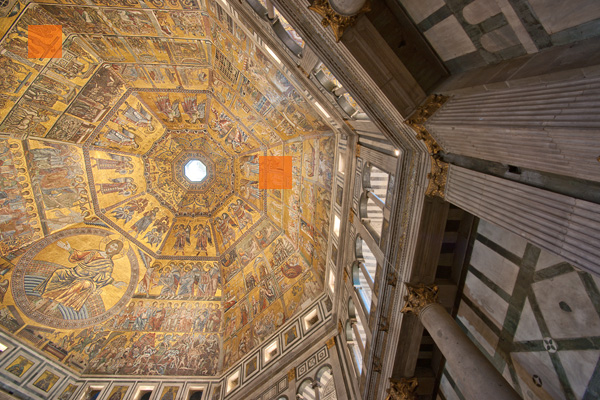(February 2009) During the past few days I had access to an early production sample of the new Zeiss ZA 2.8/16-35mm (thanks to Sony Switzerland!). I’ve been using it on a trip to Florence, shooting with the A900 and several superwide lenses in parallel (the Minolta 3.5/17-35mm G, the Minolta 2.8-4/17-35mm D, and the Sony AL 2.8/20mm).
Righth from the beginning the Zeiss impressed me because of its image quality at f=16mm. It is considerably sharper - at least at its wide end - than the previous Minolta AF Zooms 3.5/17-35mm G and 2.8-4/17-35mm (D).
All images shown here were taken with a Sony Alpha 900. The raw data were developped using Photoshop CS4. Sharpening was set to “50”, Radius to “0.5” and Detail to “50”.
All other settings were standard, and no correction for Chromatic Aberration was applied. Remember that Nikon full frame DSLRs routinely do apply CA correction to all lenses!
f2.8: Perfect resolution in the center, very good in the extreme corners, especially if CAs are removed (not shown here). Be aware that the performance is slightly lower in in the midfield, due to field curvature. Since most subjects to be shot at f2.8 will be three-dimensional, this fact will rarely cause serious trouble. It is, however, easily seen on MTF charts and when photographing flat test targets!
f5.6: We have now tad more contrast in the extreme corners, but overall not much change. Due to an increased depth of field, the performance in midfield increases considerably (not shown here).
f11:The center contrast & details are already suffering from diffraction. The corners remain, and the midfield area now is excellent as well (not shown here)
Minolta AF 2.8-4/17-35mm @ 17mm
f2.8: Very good center resolution (even wide open!), but probably the worst corners of all the > 30 lenses I have tested on the Sony A900.
f5.6: Center resolution at its optimum, and the corners improved, but still not acceptable for high-quality architecture photography
f11: the lens has basically the same detail resolution as the much ore expensive Sony Zeiss ZA 2.8-4/16-35mm
Minolta AF 3.5/17-35mm G @ 17mm
f2.8: At 17mm and wide open the 17-35 G has an excellent center resolution (same as the much cheaper 2.8-4/17-35), an the 3.5/17-35mm G may have a slightly better contrast compared to its newer (and much cheaper) Tamron/Minolta counterpart. The corners wide open however are not much better ...
f5.6: Stopped down to f5.6 the center resolution and contrast are at their best. The corners have improved, but they are still much worse than e. g. the corners of the Minolta 2.8/20mm at f 5.6.
f11: While the corners are still improving, the center is already deteriorating because of diffraction effects. Nevertheless f11 is recommended for optimal "over-all" quality
Sony AL 2.8/20mm (slightly adapted computation from the Minolta AF 2.8/20mm)
f2.8: quite soft in the center, and really soft in the corners. Very pleasing rendition of colors for print sizes around 20x30cm !!
f5.6: corners are nearly as good as with the ZA 16-35, and slightly better than those of the two Minolta Zooms AF 3.5/17-35 G and AF 2.8-4/17-35 D
f11: Excellent even in the extreme corners, better than Zeiss ZA 2.8/16-35mm










